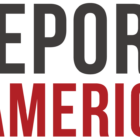 Though the Public Press team is looking to construct a local news organization that’s innovative in its business model, production, design, financing, management, technology and distribution, the raison detre of this exercise is to cover stories that traditionally have been ignored in the press. This is the fun part: pushing the boundaries of what professional journalists have considered “news.”
Though the Public Press team is looking to construct a local news organization that’s innovative in its business model, production, design, financing, management, technology and distribution, the raison detre of this exercise is to cover stories that traditionally have been ignored in the press. This is the fun part: pushing the boundaries of what professional journalists have considered “news.”
What topics are left by the wayside? They include stories that lack a special appeal to so-called quality readers — the wealthy elite sought by high-end advertisers. (Your suggestions are more than welcome; please leave some ideas in the “comments” section at the bottom of this post.) Some initial thoughts on what would be important for the rest of us to read more of:
- Poverty and segregation
- Diversity and immigration
- Science
- Education (primary, secondary and higher)
- Business from an average consumer’s point of view
- Labor
- Media criticism
- Public transportation
- The rental housing market
- Public health
- Political substance (as opposed to the electoral horserace)
- Criminal justice and prisons (as opposed to individual crimes)
- Grassroots arts and culture production
- State politics and public policy
This last point was the subject of an insightful report last fall from the California Media Project (since renamed the California Media Collaborative) by its founder, Louis Freedberg. The report, “ Covering California: Perspectives on Media Coverage of California,” surveyed nearly 70 community and civic leaders, revealing a deep dissatisfaction with the quality and quantity of news available to the public about statewide public-policy concerns.
Of the report’s 14 conclusion and recommendations, No. 3 in particular attracted our attention: “Many respondents felt several important California issues have been under-reported or poorly reported, from complex issues such as the state budget, health care reform, and the state’s cultural and ethnic diversity, to more specific stories such as the impact of the January 2007 freeze on rural California.”
Freedberg quotes civic leaders complaining that no news outlet in the state has adequately covered African American issues; local changes in the enforcement of immigration laws; or education challenges such as teacher assignments, curriculum and year-round scheduling, which arise before a district takes the dramatic step of shutting down an underperforming school. Also lacking are coverage of California’s growing water shortage, trade-offs between taxes and government services, and “down-ballot” electoral races.
Bias
The question of under-reported topic areas draws comparisons with all manner of politically motivated media critics, from Fairness and Accuracy In Reporting on the left to Accuracy In Media on the right. We get asked frequently, “Will the Public Press be advocacy journalism?”
The short answer is: No.
The slightly longer answer is: Most journalists these days will tell you that it’s hubris to suggest that there is such as thing as “objective” journalism. We all assume, for instance, that democracy is a virtue, politicians should not lie and it’s wrong for a company to market unsafe products. All these biases could be called “pro-public.”
But pro-public as opposed to what? A few years ago New Yorker media critic Ken Auletta tackled this question in a talk accompanying his 2003 book, “Backstory: Inside the Business of News.” “I think the dominant bias is a market bias,” Auletta said. “It’s a bias for conflict. It’s a bias for ‘gotcha.’ It’s a bias for process, polling stories. It’s a bias for ratings and circulation. And it’s a bias that flows naturally from the business entities that own these institutions.”
Since our first meeting on Nov. 20, the Public Press team has debated the ideal editorial tone for a public-trust startup newsroom. What’s the voice of a noncommercial daily news provider? The consensus, even from those who currently practice advocacy journalism was a “pro-public” bias.
This phrase, not coincidentally, echoes the name of the organization that Herb and Marion Sandler established with their seed grant of $10 million to ProPublica, a startup investigative reporting unit in New York that plans to give away stories to the commercial press that their owners might not initially consider worth funding. Paul Steiger, the project’s founding editor, has charged his team of 24 investigative reporters with pursuing journalism “that shines a light on exploitation of the weak by the strong and on the failures of those with power to vindicate the trust placed in them.”
Pro-public is also traditionally the bias of public broadcasters, such as NPR, PBS and the hundreds of member stations that exchange news stories with those networks. It’s the founding bias behind Consumer Reports Magazine, whose mission is “to work for a fair, just, and safe marketplace for all consumers and to empower consumers to protect themselves.”
Our aim at the Public Press is to bolster the practice of this pro-public bias by expanding the definition of “public media” to include journalism traditionally dominated by privately owned daily newspaper companies. These private owners have served journalism brilliantly for more than a century, but collectively have shown an inability to weather the recent downturn in print advertising and readership precipitated by new technology.
That is why we’re also keen on working with the California Media Collaborative to developing point No. 7: “New business models will be needed to sustain print coverage, including support from the philanthropic sector.”










